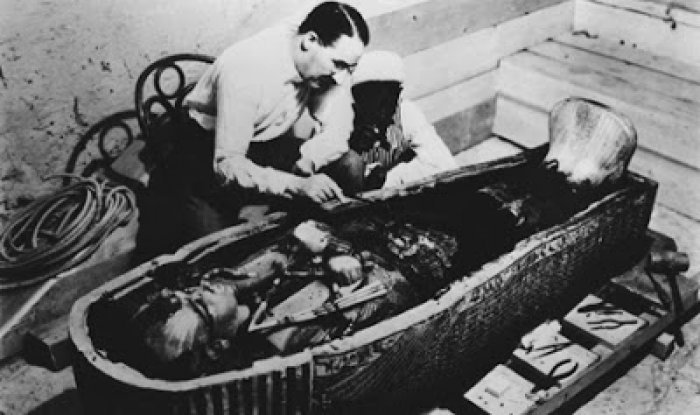AncientPages.com - On November 4, 1922, British archaeologist Howard Carter discovered King Tut's tomb in Luxor's Valley of the Kings. The tomb was intact and packed with antiquities, including Tut's world-famous golden mask.
King Tut's golden mask. Credit: Mark Fischer - CC BY-SA 2.0
Carter's interest in ancient Egypt was born when he was still a young boy and one day saw his father paint a portrait of a famous Egyptologist.
Carter's father found him a job as an artist for an archaeologist when he was17.
Soon after that, in 1891, he traveled o Egypt and started to explore ancient sites. He became very good at improving the methods of copying tomb decorations.
Carter worked for many years under different archaeologists at sites, including Amarna. Then, he was employed by Lord Carnarvon, a wealthy English aristocrat interested in ancient Egyptian history.
Carter started excavating, but Lord Carnarvon became impatient at the lack of results after some years. Lord Carnarvon told Carter he had only one more season of funding to find the tomb of King Tutankhamun.
Carter was under pressure, but he was lucky.

Howard Carter entered King Tutankhamun's burial chamber and found a series of coffins that contained the teen king's mummified body. Public domain
On November 4, 1922, a boy who worked as a water fetcher on the excavation started digging in the sand with a stick. He discovered a stone step there and quickly showed it to Carter.
When Carter and his team examined the site, they found ancient steps leading to a sealed door and secret chamber.
On November 26, 1922, Carter and Lord Carnarvon entered the tomb, where they found an immense collection of gold and treasures. Some months later, on February 16, 1923, Carter opened the innermost chamber and found the sarcophagus of King Tutankhamun, which became one of the most significant discoveries in the history of Egypt.
Written by AncientPages.com







